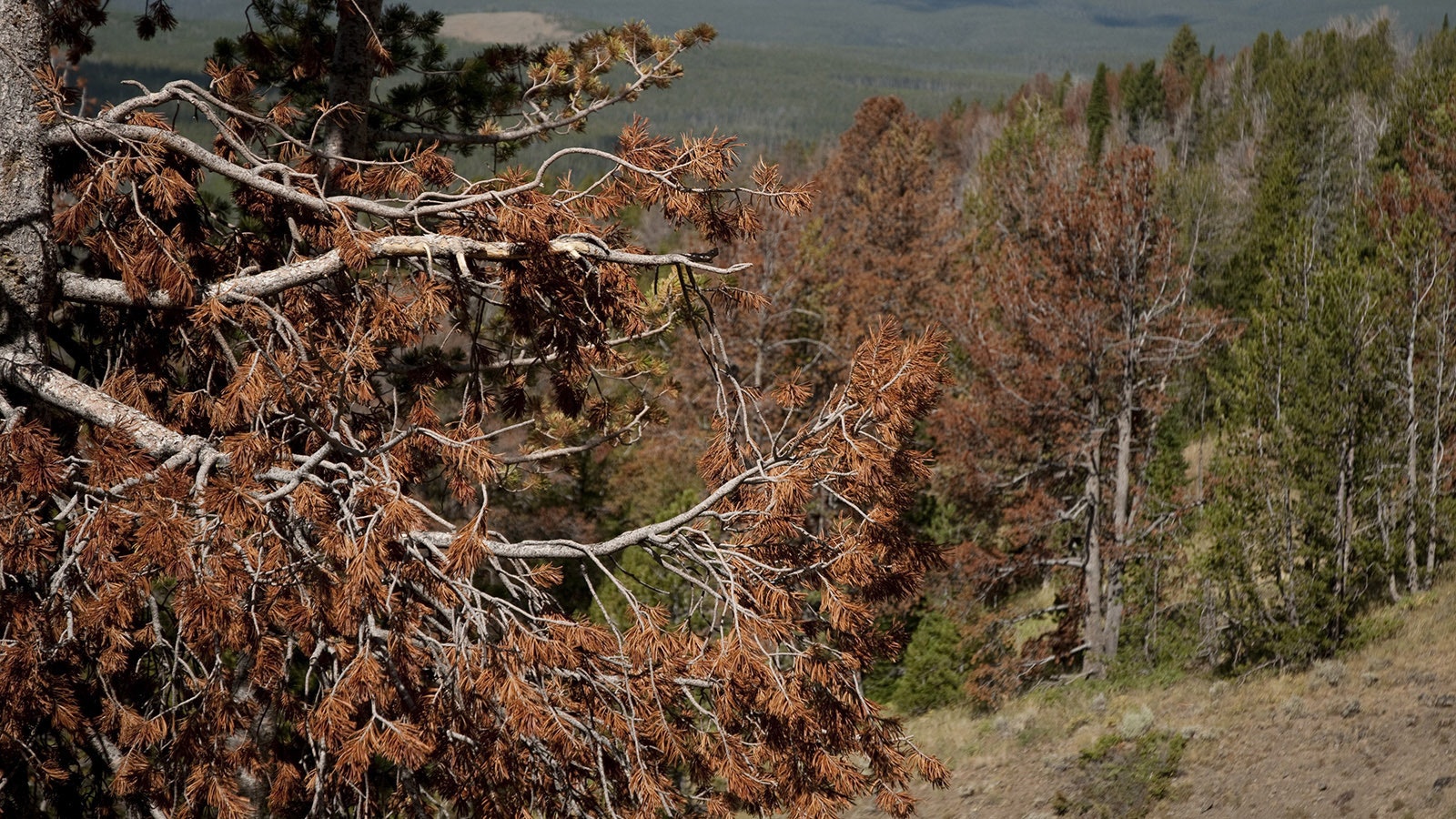Even while chastising federal government officials for delaying a decision on whether grizzlies should be delisted, Wyoming and Montana’s governors are hailing a relocation of bears as a sign that it’s time to delist.
Two grizzlies captured in a remote area of northwest Montana were released in Wyoming this week.
A subadult female grizzly was released Tuesday in the Blackrock drainage about 35 miles northwest of Dubois, according Wyoming and Montana wildlife managers. On Wednesday, Yellowstone National Park wildlife agents released a subadult male in a remote area south of Yellowstone Lake.
The relocations are part of cooperative program between Montana and Wyoming to boost genetic exchange between Montana’s Northern Continental Divide grizzlies and Wyoming’s Greater Yellowstone bears.
Genetic exchange between those populations is seen as a key component of full grizzly recovery in the Lower 48.
Wyoming Gov. Mark Gordon and Montana Gov. Greg Gianforte said in a joint statement Friday that moving the bears is important step toward getting grizzlies delisted.
“This week’s effort assures genetic connection can be achieved through active management to address the court’s requirement where a healthy number of grizzlies and an ever-expanding range have not been sufficiently convincing to the 9th Circuit,” Gordon said in the statement.
Govs. To Feds: Stop Dragging Your Feet
Meanwhile, Wyoming and Montana blasted the U.S. Department of the Interior and Fish and Wildlife Service over what they claim are needless delays in the feds reaching issuing a decision whether to delist grizzlies in the Lower 48.
The FWS recently petitioned a federal court to push the decision back until Jan. 31, 2025.
Wyoming and Montana say that’s unacceptable.
Montana last month sent a notice of intent to sue to U.S. Interior Secretary Deb Haaland and FWS Director Martha Williams.
Montana claims to have been waiting since 2022 for an answer from the feds regarding whether grizzlies could be delisted, according to the letter.
If FWS doesn’t render a decision by Sept. 11, Montana will file a lawsuit to force it to do so, the letter states.
Gordon said in a statement that Wyoming is willing to wait until Oct. 31.
“We will not accept a six-month delay to Wyoming’s petition, and one that costs the state $2 million annually to manage a species we have no authority over,” Gordon said. “Wyoming will accept nothing less than the service to expeditiously complete the delisting decision for the GYE bear no later than Oct. 31, 2024.”
Politics At Play?
The FWS might be trying to delay its decision out of an abundance of caution, former U.S. Assistant Secretary of the Interior Rob Wallace told Cowboy State Daily.
“If I read between the lines, everybody is trying to make sure they when they act, it (grizzly delisting) doesn’t just go back into the courts again,” said Wallace, who oversaw the FWS in his former administrative role.
There could be politics at play as well, retired federal ecologist Chuck Neal of Cody told Cowboy State Daily.
If the decision is delayed until Jan. 31, 2025, “that would take it past the election season and put it before a new presidential administration,” he said.
Is It Time To Delist?
Grizzlies once occupied much of the Western United States, but by the 1970s, their population had dwindled away almost entirely. They were placed under federal protection in 1975 so that they could recover.
Wallace said that’s been accomplished.
“From a recovery standpoint, the bears have met the recovery threshold that was set,” he said.
The recovery goal was about 700 grizzlies in the Greater Yellowstone Ecosystem. There’s thought to be well over 1,000 bears in the GYE and at least that many more in the Northern Continental Divide ecosystem.
Most FWS biologists, as well as those with the state wildlife agencies, think that there are more than enough bears for delisting, Wallace said.
“You really want the Endangered Species Act to be decided by the biologists and not the courts,” he said.
If grizzlies are delisted, Wyoming Game and Fish has plans in place to open a hunting season for them here.
However, others argue that numbers alone aren’t enough and that the bears need more territory and greater genetic exchange between populations.
Neal said he favors that stance.
While moving two bears from Montana to Wyoming helps, it really amounts no nothing more than an “open air zoo” approach to bear management, he said.
Large-scale, natural genetic exchange needs to happen, he said.
He said he shares the sentiments of retired Missoula, Montana, biologist Chris Servheen that the states can’t be trusted to properly manage grizzlies.
Servheen was the FWS grizzly bear recovery coordinator for 35 years before retiring in 2016.
He previously told Cowboy State Daily that he initially favored delisting grizzlies, but then changed his mind when he saw how heavy-handed they’d been with wolves.
Mark Heinz can be reached at mark@cowboystatedaily.com.





